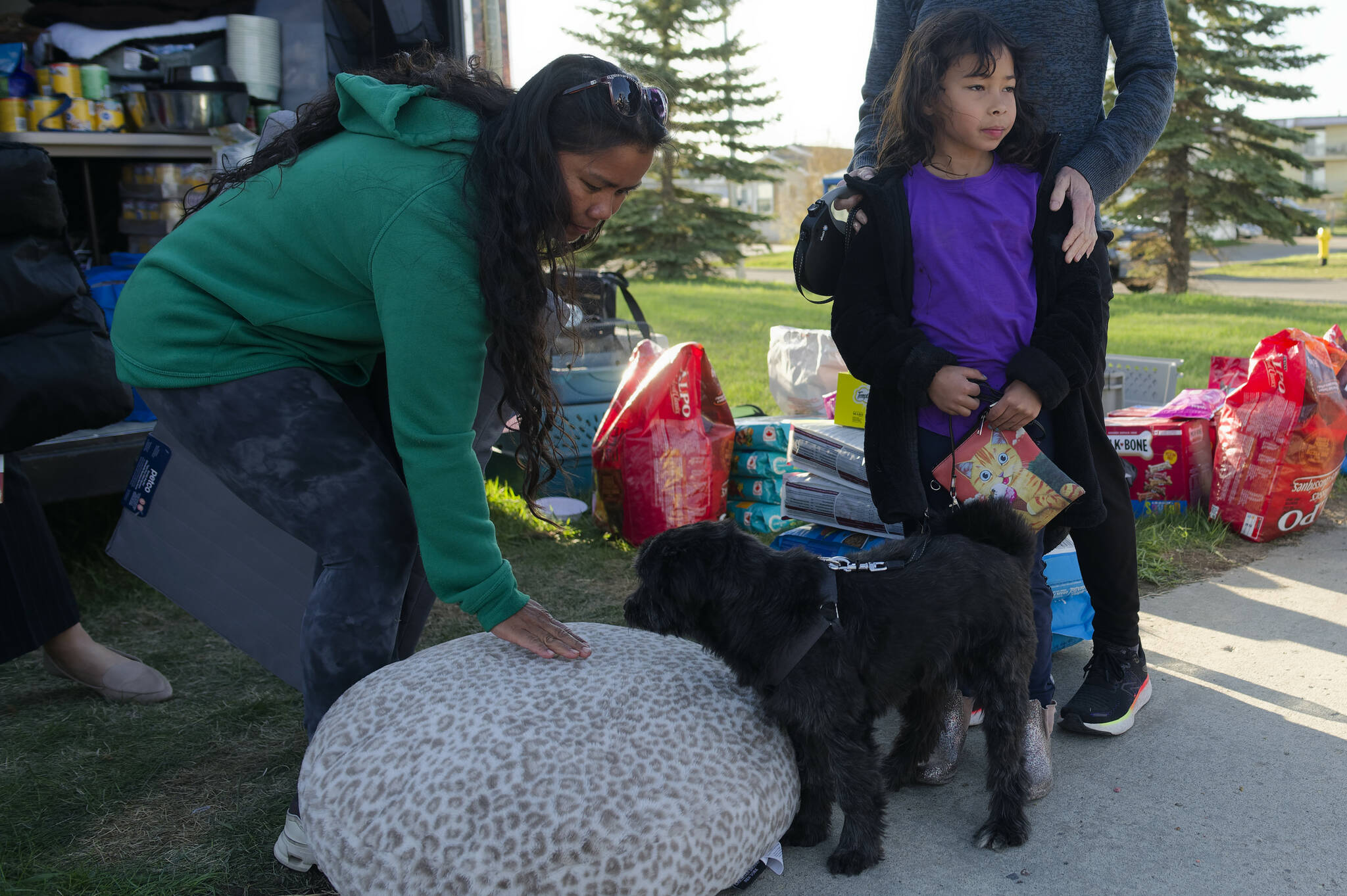Gusty winds could fan “aggressive fire behaviour” in the north, where out-of-control blazes have forced several thousand people to flee their homes, B.C. Wildfire Service said.
An update from the service said winds could pick up Wednesday in the Fort Nelson area where an 84-square-kilometre blaze threatens the town that has mostly been abandoned by residents.
The community of about 4,700 has been evacuated since Friday along with the neighbouring First Nation, while the Doig River First Nation and Peace River Regional District also issued evacuation orders due to a separate fire north of Fort St. John.
The Northern Rockies Regional Municipality said a public information meeting for evacuees from the Fort Nelson area is set to take place in Fort St. John Wednesday.
Mayor of the Northern Rockies Regional Municipality Rob Fraser said in an update posted online that the thousands of people who have escaped to Fort St. John have significantly increased the small town’s population.
Fraser, whose jurisdiction includes the town of Fort Nelson, said volunteers helping evacuees are conducting the provincial emergency services program the way they have been trained.
“I’ve said this before, and I’ll say it again, when it’s 3,500 people (who) drop into a community of 25,000 it’s a shock, it’s a shock to them. So, please be patient,” he said.
Hotel manager Zeny Patel at the Howard Johnson in Fort St. John said the sudden influx of wildfire evacuees from Fort Nelson has sold out hotels all over town.
Patel said accommodating evacuees who arrive stressed and emotional has been a challenge, but hotel staff are supporting them as much as they can.
She said many evacuees have multiple pets, so they’ve allowed animals in rooms where they usually wouldn’t.
Patel said the hotel team is doing its best to help evacuees, knowing “they all want to go home.”
Andy Larocque says he and his family were in Fort St. John for a medical appointment last Friday, and they had started heading home to Fort Nelson when they got word of the evacuation order for the community of about 4,700.
Larocque says he feels lucky to be far from the threat, but he had no chance to secure anything back home at his five-acre property.
He says he’s heard from his brother, who stayed behind, that his property is OK for now, and he’s trying not to let the stress of the situation get him down because the fire, wind and other elements are out of his control.
Eileen McPhee was at a funeral north of Fort Nelson when the town was ordered evacuated last Friday, and she says she felt “helpless” when she heard about the wildfire pushing toward her community.
Now in Fort St. John, McPhee needs supplies for her dog, and she was looking through a plastic bin of dog collars available outside the emergency services centre at the arena where evacuees are set to gather for a public meeting later today.
She says road closures forced her to take a long, circuitous route through Smithers and Prince George to get to Fort St. John, where her daughter was staying.
The wildfire service said stronger winds will result in more aggressive fire behaviour and increased rates of spread, posing challenges for suppression efforts.
It said conditions remain unseasonably warm and dry throughout much of the province, raising the potential for fires to spark and grow.
The service added that most spring wildfires are typically caused by human activity and everyone must do their part to avoid sparking a blaze.
Wildfires this year have already burned through more the 2,300 square kilometres of British Columbia, according to the wildfire service.
That’s already enough to place 2024 in the middle of the rankings for the total amounts burned in entire years since 2008, although it’s less than one tenth of the record 28,000 square kilometres scorched last year.
There are 128 active wildfires listed in the province, including 15 that are burning out of control.
READ ALSO: Criminals take advantage as Fort Nelson residents flee wildfire: Police
READ ALSO: B.C. wildfire project tells communities how to protect and prepare

